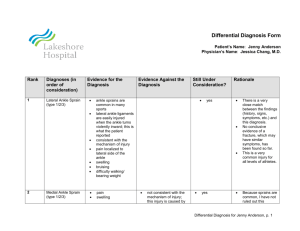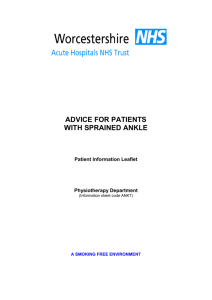Clinical Correlation: Lower Extremity
advertisement
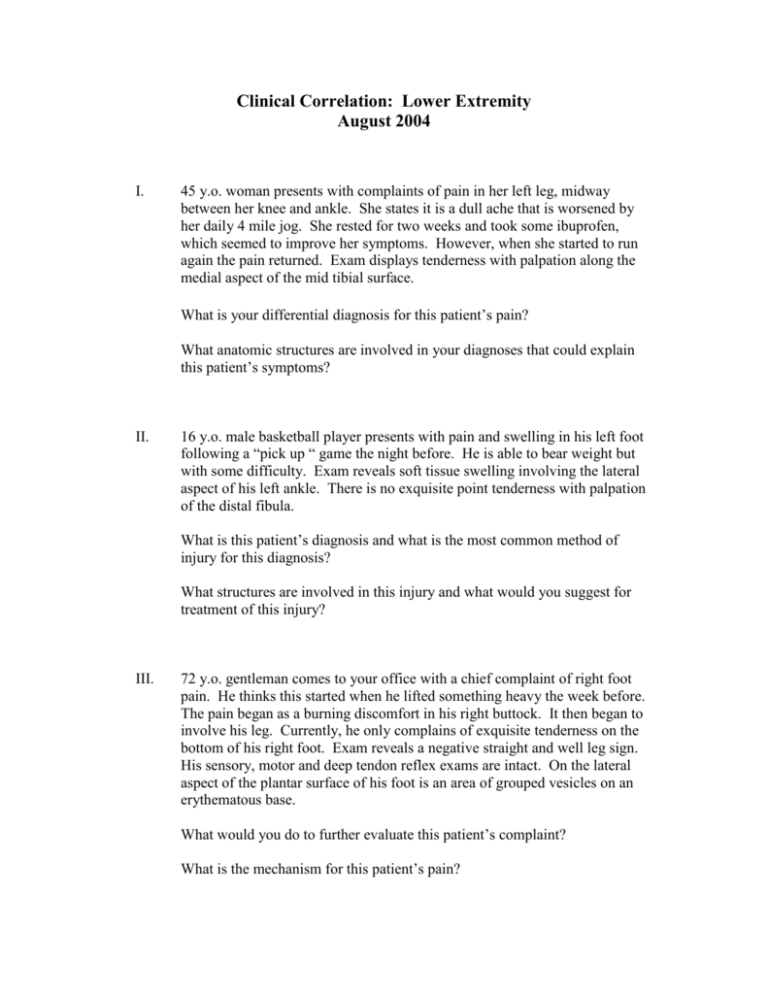
Clinical Correlation: Lower Extremity August 2004 I. 45 y.o. woman presents with complaints of pain in her left leg, midway between her knee and ankle. She states it is a dull ache that is worsened by her daily 4 mile jog. She rested for two weeks and took some ibuprofen, which seemed to improve her symptoms. However, when she started to run again the pain returned. Exam displays tenderness with palpation along the medial aspect of the mid tibial surface. What is your differential diagnosis for this patient’s pain? What anatomic structures are involved in your diagnoses that could explain this patient’s symptoms? II. 16 y.o. male basketball player presents with pain and swelling in his left foot following a “pick up “ game the night before. He is able to bear weight but with some difficulty. Exam reveals soft tissue swelling involving the lateral aspect of his left ankle. There is no exquisite point tenderness with palpation of the distal fibula. What is this patient’s diagnosis and what is the most common method of injury for this diagnosis? What structures are involved in this injury and what would you suggest for treatment of this injury? III. 72 y.o. gentleman comes to your office with a chief complaint of right foot pain. He thinks this started when he lifted something heavy the week before. The pain began as a burning discomfort in his right buttock. It then began to involve his leg. Currently, he only complains of exquisite tenderness on the bottom of his right foot. Exam reveals a negative straight and well leg sign. His sensory, motor and deep tendon reflex exams are intact. On the lateral aspect of the plantar surface of his foot is an area of grouped vesicles on an erythematous base. What would you do to further evaluate this patient’s complaint? What is the mechanism for this patient’s pain? IV. 55 y.o. female has just returned from Australia. She states that she noticed some swelling in her ankles when she returned. Her left ankle is now back to normal but her right leg, below the knee, continues to be swollen and now the calf is tender to the touch. Exam displays mild erythema and warmth below her right popliteal fossa. She has tenderness when the gastrocnemius is palpated and with dorsiflexion of the right foot. The right calf measures 2 cm larger than the left. What is your differential diagnosis and how would you explain these findings, anatomically? Name three pathophysiologic mechanisms that predispose to this condition. V. 25 y.o. male presents to your office with complaints of numbness in his left thigh. As he describes it to you he draws an oval on the lateral aspect of his upper thigh. He reports the pain as being burning in nature. He denies any loss of strength, and reports no recent trauma to the area. In fact, he was quick to tell you that he recently completed a 500 mile charity ride for his local motorcycle club without difficulty. On exam, there were no discrepancies in testing his muscle strength in his lower extremities. His patellar reflex was present. He had loss of discrimination to sharp/dull stimuli in the oval area that he had outlined on the lateral aspect of his upper left quadriceps. What is the mechanism of this patient’s deficit and what recommendations would you make to him to avoid this occurring in the future? VI. 33 y.o. female presents with a history of varicose veins. Recently, she has noted increased “fluid” or swelling in her legs, up to her groin. She would like you to refer her to a surgeon to get her “veins stripped.” On exam, you note non-pitting edema in both legs up to her groin. In the inguinal regions there are multiple, hard nodules approximately 1.5 – 2.0 cm in size. They are not movable and are not tender. What are your concerns and what would you do now?
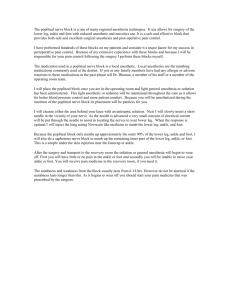
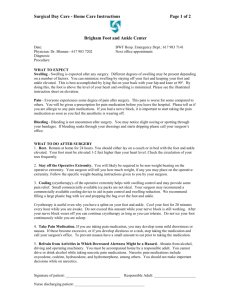
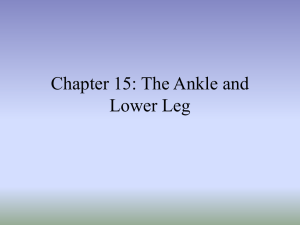

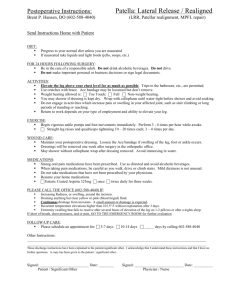

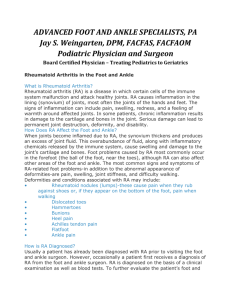
![Breakin' 101 lesson plan[1]](http://s3.studylib.net/store/data/008605078_1-df9bf4d94eff54530d2d1b99aab49594-300x300.png)
